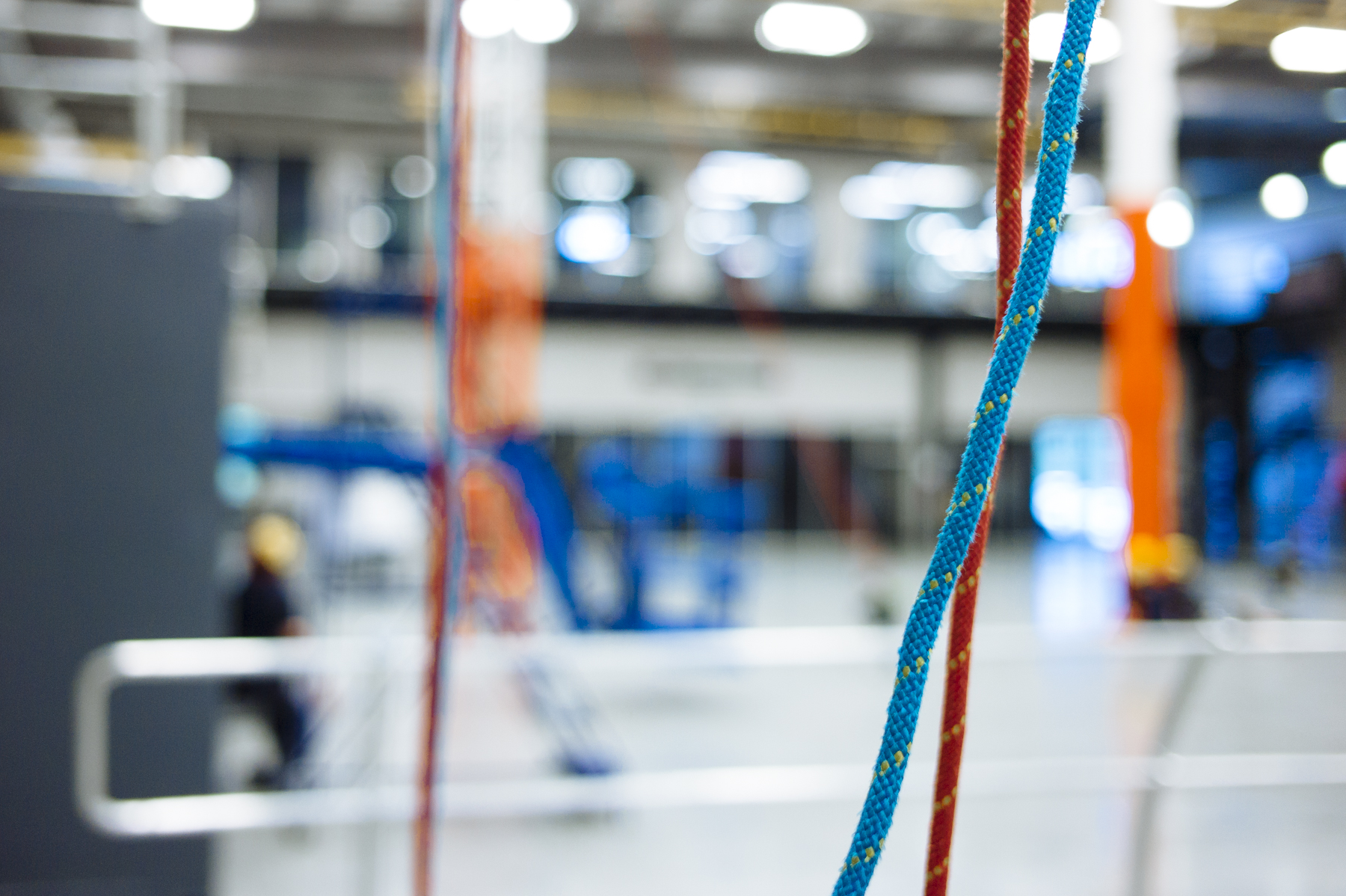Your cart is currently empty!
Inspecting: Abrasion/Wear | Cuts/Tears | Burns/Heat/Slag

EQUIPMENT INSPECTION
What to Look for!
Part 1 of 3
There are common types of damage and wear an inspector will be looking for when inspecting fall protection equipment. Covered are some of the common inspection points for inspecting soft fall protection goods. It is important for the inspector to recognize that more inspection points may come up based upon the areas they are working in. It is impossible to detail all of the things that may happen to equipment in this section. However, a quality inspector will research the work environment, educate themselves on the products in use, and be attentive to damage or wear caused by that environment.
Abrasion/Wear
The webbing routinely rubbing against abrasive material causes abrasion damage. Areas that are commonly abraded are the inside leg loops of a harness, lanyard webbing (especially on wrap-around lanyards), SRL webbing, rope, and anchorage connector straps. Minor abrasion is usually acceptable. Retire once the webbing is damaged by the abrasion, the entire component is abraded, or there are other items combined with the abrasion concern.
GOOD CONDITION
Webbing is used, fiber frays are minimal, and webbing thickness is consistent throughout, and shows no signs of damage.
AVERAGE CONDITION
Webbing is used, multiple fiber frays are common, no signs of damage, and webbing thickness is consistent throughout.
POOR CONDITION
Webbing is very used, multiple fiber frays throughout, webbing has begun to “ripple” and webbing thickness is inconsistent.
Cuts/Tears
The equipment catching on some foreign object usually causes cuts and tears in webbing. Workers on telecommunication or lattice type structures often get equipment caught on the end-cut of angle iron or steel that catches and cuts into the webbing and starts a tear. The ends of bolts and screws often catch and tear material also. Edges of metal flashing can cut into ropes and lifelines as well as sharp edges of machinery or beams. Some manufacturers specify the length a cut into the webbing can be and remain acceptable, however Gravitec Systems cautions against this practice and recommends any cut into the webbing be cause for removal.
GOOD CONDITION
Webbing is intact, no cuts or tears.
POOR CONDITION
Webbing is cut or torn.
Burns/Heat/Slag
Equipment used around welding or hot materials often melts or begins to burn. The melting point of equipment varies from one item to the next, but most all melting points are over 200 degrees F. It is rare that a worker will be using an item in an environment with an ambient temperature higher than this, so rarely do you find systemic damage on items due to heat. Usually heat damage is very acute, and limited to an area on the equipment that has come into contact with something hot (pipes, welders slag, cigarette ash, flame, etc.). Burn and damage due to heat is difficult to see. If the material begins to melt, it may not change color, it merely shrinks a little, becomes hard, and has a glossy finish. If an inspector is not attentive, it is easy to miss a burned or glazed area. Any burn is usually cause for retirement.
SMALL BURNED AREA
The webbing shrinks, becomes hard, and has a glossy appearance.
BURNED AREA
The material begins to burn; the area melts, and turns black or dark brown. Upon cooling the area is hard, not supple.
HOLES
Hot objects (slag, cigarette ash, sparks, metal filings) contact the webbing and burn through. A hole is visible or the object is imbedded in the webbing and can be felt or seen. Common areas of damage are underneath adjustment buckles or D-rings on harnesses, energy absorbers on lanyards, or other areas that “catch” flying material.
GLAZING
Ropes that arrest a fall, quickly rub against structure, or have a fall arrestor used, often become glazed. This is an indicator of fall arrest or loading and is cause for retirement.
Need Help Inspecting Your Equipment?
If you have any additional questions or need a replacement, contact our Equipment Advisors at 800.755.8455.